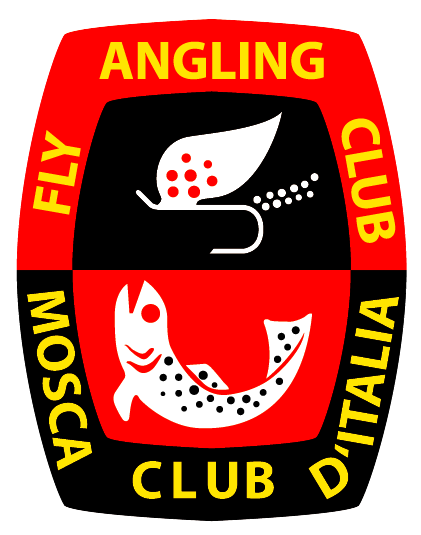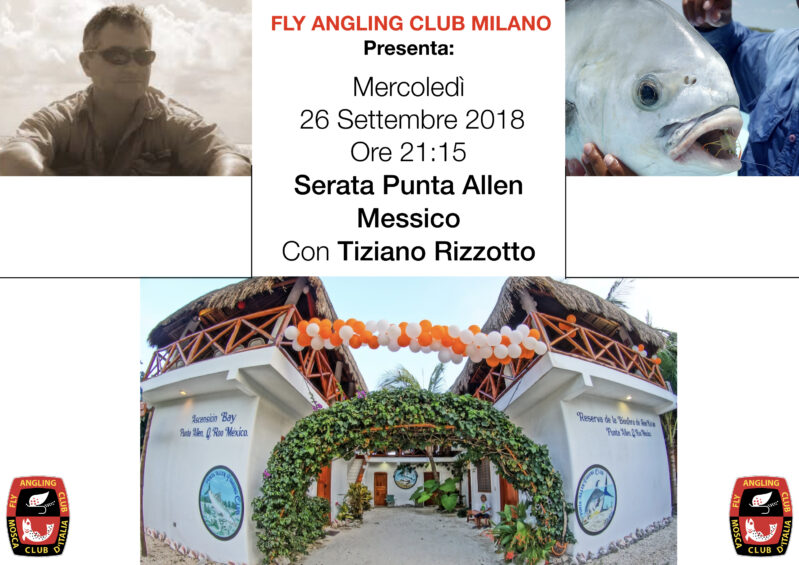

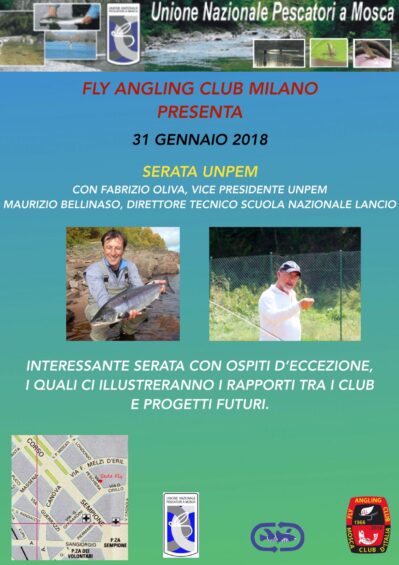
SERATA PRESENTAZIONE UNPEM – SNL
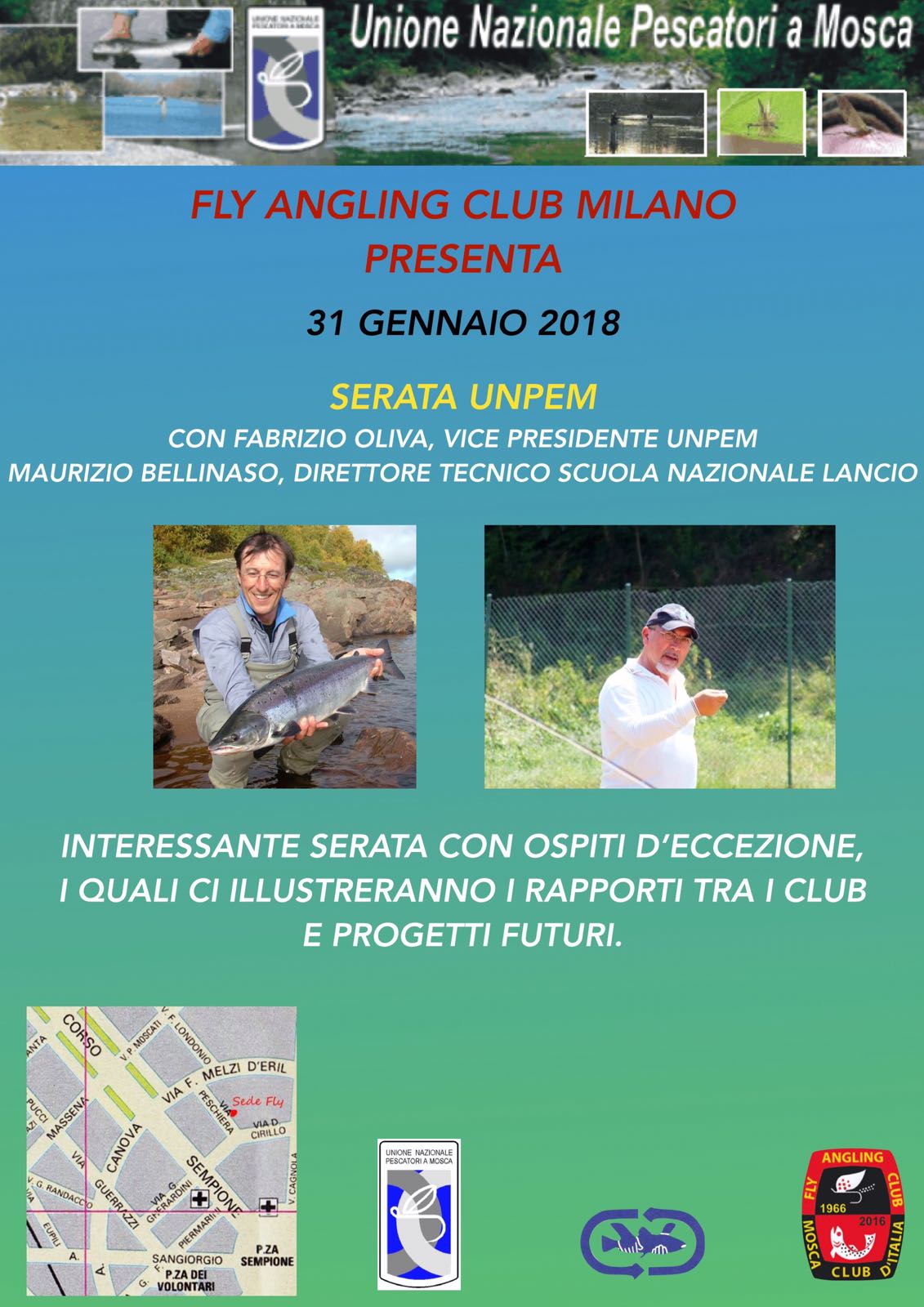
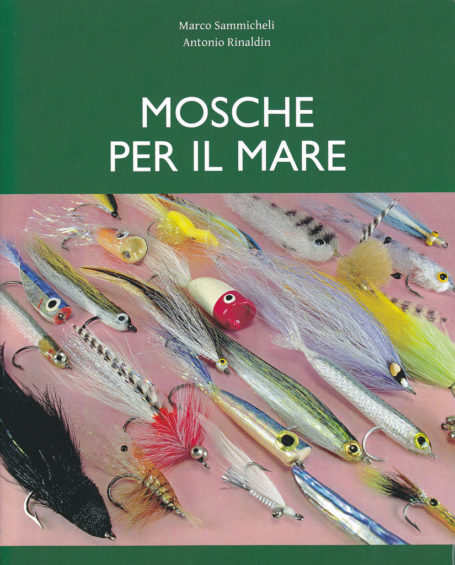
Mosche per il mare
“La diffusione della pesca a mosca in mare nel Mediterraneo ha prodotto nei paesi che vi si affacciano un crescente interesse per le mosche da mare e per la loro costruzione. I testi sull’argomento non sono molti, sono tutti in lingua inglese ed hanno vari riferimenti a specie di pesci diverse dalle nostre. Per questo abbiamo pensato e realizzato questo libro come un manuale tecnico ed insieme come antologia di stili dodificati, scelti per la pesca nei nostri mari. I passaggi di costruzione dei diversi artificiali illustrano, in ordine sparso ma con concretezza applicativa, le principali tecniche di montaggio dei diversi materiali. Le varianti accostate alle mosche di cui è illustrato il montaggio integrano una sintetica panoramica degli stili e delle applicazioni che si sono ritenute più significative sia dal punto di vista delle tecniche costruttive che dell’utilità in pesca”
Gli autori: Marco Sammicheli ed Antonio Rinaldin
NB.: il libro è acquistabile su Amazon .com

Finali
Finali classici
Qua trovate alcune “formule” per confezionare finali a nodi adatti per varie sitruazioni di pesca.
Charles Ritz – serie P.P.P. potenza progressiva perfetta !!
Finale a nodi normale – lunghezza mt.2,80 – diametro finale 24
| diametro | 45 | 40 | 35 | 30 | 24 |
| lunghezza mt. | 1,10 | 0,90 | 0,15 | 0,15 | 0,50 |
diametro finale 20
| diametro | 45 | 40 | 35 | 30 | 24 | 20 |
| lunghezza mt. | 1,10 | 0,75 | 0,15 | 0,15 | 0,15 | 0,50 |
speciale corto – mt 2 – diametro finale 24
| diametro | 45 | 40 | 35 | 30 | 24 |
| lunghezza mt. | 0,70 | 050 | 0,15 | 0,15 | 0,50 |
speciale corto diametro finale 20
| diametro | 45 | 40 | 35 | 30 | 24 | 20 |
| lunghezza mt. | 0,60 | 0,45 | 0,15 | 0,15 | 0,15 | 0,50 |
lunghezza mt. 2,80 diametri finale 16/14
| diametro | 45 | 40 | 35 | 30 | 24 | 20 | 16/14 |
| lunghezza mt. | 1,55 | 0,15 | 0,15 | 0,15 | 0,15 | 0,15 | 0,50 |
Finale di mt. 2,45 -diametro 16 – suggerito dal Prof. Enzo Forlivesi sulla base di studi di proiezione dinamica
| diametro | 45 | 40 | 35 | 30 | 24 | 22 | 20 | 16 |
| lunghezza mt. | 1,00 | 0,26 | 0,22 | 0,16 | 0,13 | 0,10 | 0,08 | 0,50 |
I finali del “Bringa”
di Alberto Bringhenti
tre finali a nodi per mosca secca adatti a tutte le situazioni :
| Ø | 0,45 | 0,40 | 0,35 | 0,30 | 0,25 | 0,20 | 0,16 |
| cm. | 60 | 40 | 15 | 15 | 15 | 15 | 60 |
Finale corto da torrente mt.2,20
| Ø | 0,45 | 0,40 | 0,35 | 0,30 | 0,25 | 0,20 | 0,16 |
| cm. | 110 | 75 | 15 | 15 | 15 | 15 | 60 |
Finale medio mt.3,05
| Ø | 0,45 | 0,40 | 0,35 | 0,30 | 0,25 | 0,20 | 0,18 | 0,16 | 0,14 |
| cm. | 160 | 80 | 40 | 20 | 15 | 15 | 15 | 15 | 80 |
Finale lungo per acque piatte e lago mt.4,40
E’ possibile adeguare i diametri degli spezzoni alle proprie esigenze purché vengano mantenute le lunghezze specificate.
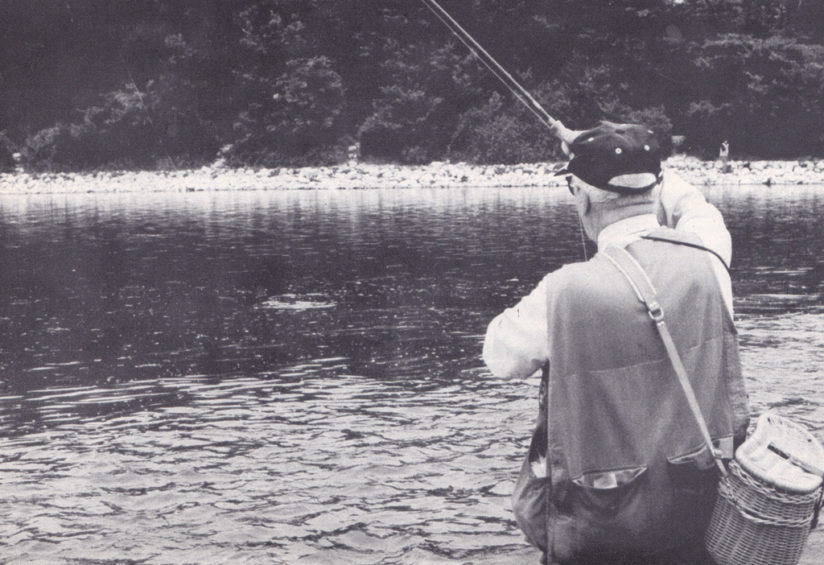
Secca o bagnata?
Divagazioni “polemiche” di G. Ballarin.
La pesca a mosca secca è indubbiamente la più divertente ed appassionante: vedere la mosca che abbiamo lanciato in quel determinato punto “sospetto”, seguirla il più strettamente possibile, aguzzando lo sguardo per cogliere quell’agognato istante in cui la si vedrà “succhiata” dal pesce. Ed ecco che ad un tratto il nostro sogno si avvera: la mosca è sparita; trascorrono frazioni di secondo che sembrano minuti e poi è proprio vero, non abbiamo sognato! E ce lo dimostra la nostra lenza che si stira ed inarca a scossoni la nostra canna da pesca docile e potente! La vittoria si delinea sempre più certa e l’animo si riempie di commozione gioiosa. Tra poco la preda agognata sarà accolta, ancora palpitante, nel capiente guadino. Purtroppo, come tutte le cose belle, anche la pesca a mosca secca ha il suo lato scabroso e cioè la galleggiabilità’ dell’artificiale. Un mio vecchio amico e collega della Marina Inglese soleva spesso dirmi: “farà sicuramente denari ed oro a palate l’uomo che riuscirà ad inventare queste due cose: fare crescere i capelli ai calvi e rendere inaffondabile una mosca artificiale….”. Difatti se è relativamente facile far galleggiare un amo coperto di piume in acqua ferma, non lo è altrettanto in acque influenzate da corrente. Ne consegue che, pescando in torrente, avremo la mosca a galla se frusteremo in “UP STREAM” (da valle a monte). Appena caduta in acqua la nostra mosca si avvicinerà a noi trasportata dalla corrente e dovremo, di conseguenza, ricuperare sveltamente con la mano sinistra la lenza onde evitare che, col suo dragaggio in acqua, obblighi la mosca ad affogarsi. Non appena l’artificiale sarà passato “a valle” di noi, la sua funzione di mosca a galla sarà finita perché la velocità della corrente, tenendo tesa la lenza, lo obbligherà a sommergersi e a divenire quindi “mosca annegata”. In considerazione di quanto sopra esposto se ne deduce che:
- La pesca a mosca secca in torrente ci obbliga a fare molti più lanci di quelli che avremmo fatto pescando a “mosca sommersa”
- II percorso produttivo della mosca secca è assai inferiore di quello a “mosca sommersa”.
Intendiamo dire che con il lancio a mosca secca possiamo esplorare 10 metri utili di acqua mentre con quello a mosca annegata ne esploreremo almeno trenta. Con ciò, sia ben chiaro, che noi non ci sentiamo affatto propensi ad affermare che la mosca sommersa sia più proficua di quella a mosca secca. Sia in Inghilterra (Patria del fly fishing), come in America e Francia, si sono consumati fiumi d’inchiostro nel trattare questo argomento, con la conclusione che ogni sostenitore delle due esposte polemiche è rimasto invariabilmente convinto della giustezza della sua opinione.
A favore della mosca secca gioca il fattore che l’artificiale si presenta al pesce solo per metà e cioè la parte sommersa. Il pesce “crede” di più perché la mosca gli si presenta dissimulata a metà dal diaframma “acqua – aria”. A scapito della mosca secca c’è invece la constatazione matematica che il pesce non mangia a galla a tutte le ore. Altro fattore negativo è costituito dal tragitto utile produttivo che, nella mosca secca, è assai inferiore a quello della mosca sommersa. Parlando ora dei pregi e difetti della mosca bagnata, diremo subito che in suo favore giocano i seguenti punti:
- la possibilità di esercitare tale pesca durante tutte le ore del giorno e per tutto il periodo dell’anno
- b) il percorso utile delle mosche sommerse è di gran lunga superiore a quello della mosca a secca
- c) la possibilità di applicare nel finale un maggior numero di mosche aumenta le probabilità di maggiori catture.
A suo svantaggio c’è il grande handicap che le mosche sommerse vengono “ispezionate” minuziosamente dal pesce, che si decide ad afferrarle solo se esse imitano alla massima perfezione un vero insetto caduto sull’acqua o in fase di risalita, se si vuole imitare la ninfa.
Dopo quanto abbiamo sopra accennato circa i pregi ed i difetti dei due tipi di pesca, vi diremo che la preferenza da dare ad uno di essi è del tutto soggettiva e dipende anche dal temperamento e dalle caratteristiche fisiche del pescatore. Bisogna inoltre considerare che non tutte le persone sono dotate da madre natura di quelle qualità fisiche che ognuno dei due metodi richiede.
Per un miope, per esempio, sarà inutile che egli sia capace di eseguire i più classici lanci del mondo quando è certo che, non appena la sua mosca si staccherà dal cimino, egli la perderà di vista e addio soddisfazione di vedere l’abboccata….
Per il purista al cento per cento non c’è alcun dubbio: egli vi dirà che la mosca secca è il “sesto grado superiore” di tutte le pesche del mondo. Per coloro invece che non vanno tanto per il sottile e che vogliono soprattutto “fare cestino”, il passaggio dalla “secca” alla “bagnata” sarà presto fatto, non appena le attese per le “bollate” si faranno troppo lunghe. E per concludere vi diremo che, nella pesca a mosca secca, la buona riuscita dipende per il sessanta per cento dalla “presentazione” dell’artificiale e per il quaranta per cento dalla qualità di esso. Nella pesca a mosca annegata, il rapporto si inverte.
In ambedue i sistemi però si intromette un terzo fattore che è il più importante di tutti: la fortuna ! Nella pesca, come nella caccia, guai a colui che non ha dalla sua parte la Dea bendata!
Dicono i nostri amici meridionali: “ vuoi fare un figlio poverello? Fallo piscatore o chiappa uccello! ……”
Marzo 1970, Il Comandante Ballarin
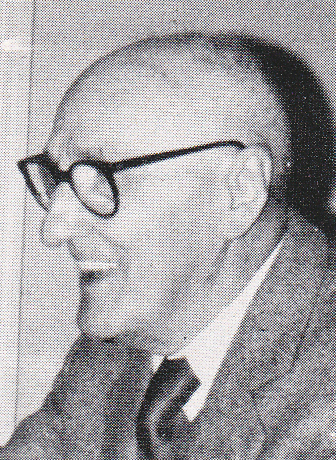
“Frustare” in acque ferme

Io sono convinto che verrà il giorno in cui, a forza di costatare che, in quasi tutti i torrenti, la resa della pesca a frusta avrà raggiunto un livello bassissimo, saremo costretti a praticare il nostro sport preferito su quelle acque tanto trascurate e snobbate: le cosi chiamate “acque ferme”. Gli inquinamenti e la grande proliferazione dei pescatori che, in pochi anni si sono moltiplicati per cento, sono i fattori principali della rarefazione dei salmonidi. I mezzi di locomozione a portata di tutte le tasche hanno certamente contribuito al depauperamento della nobile specie. Ai giorni nostri è ben raro catturare una trota indigena, cioè nata e vissuta nell’acqua ove è presa. La maggior parte delle nostre catture è costituita da trote seminate dai vari stabilimenti ittiogenici tramite i Consorzi Provinciali e i Comitati Regionali. Anche la vicina Jugoslavia, in altri tempi rinomata per l’enorme quantità di pesce pregiato, si è vista costretta a controllare entrata e uscita dei salmonidi, e deve solo alla sua oculatezza amministrativa se, ai giorni nostri, essa può ancora contare su di un afflusso turistico alieutico molto importante nella sua bilancia commerciale. Prepariamoci dunque a praticare una pesca a frusta, diretta alla cattura di una specie di pesce meno pregiata e, per fortuna, ancora molto numerosa; intendo parlare della pesca ai ciprinidi!
C’e un detto spagnolo che suona cosi: “En tiemqo de hambre no hay pan duro” che in lingua italiana significa “ in tempo di fame non si rifiuta il pane duro”. Questo proverbio se lo debbono mettere in testa tutti quei frustaioli che arricciano il naso al solo pensare di dover pescare con la frusta un solo pesce che non sia salmonide.
E parlando di ciprinidi a cui il primo premio di furberia spetta al cavedano, io direi che un uguale premio per la combattività spetta alla scardola. Questo simpatico ciprinide vive in acque quasi sempre ferme, ma lo si trova anche nei grandi fiumi e precisamente in quelle lanchette residue di grandi piene, ove l’acqua ristagna ed abbonda il canneto. Vive e si riproduce in quasi tutti i laghi di pianura e qui in Lombardia lo si trova in moltissime cave. E’ un pesce giocherellone e nervoso, pronto a ghermire tutto ciò che cade nell’acqua. Va in amore da maggio a tutto luglio, depone le sue uova alla base dei canneti e tra la poltiglia della vegetazione subacquea.
lo ho pescato per la prima volta le scardole proprio per puro caso. Mi trovavo col mio piroscafo in attesa di un carico di arachidi nel porto di Madras, sulla costa indiana del Malabar e un giorno, nel recarmi col taxi a vidimare i registri di bordo presso la nostra Agenzia Consolare, situata in periferia, tra il verde della campagna, notai che in un grande stagno costeggiante la strada, v’era una intensa attività tra le canne e tutta la superficie dell’acqua era costellata di bollate. È ovvio il dire che, il giorno dopo, di primo mattino, previo appuntamento col tassista, mi feci trasportare, munito di canna da mosca ed accessori, in quella località. Era uno stagno fitto di vegetazione subacquea intervallato da larghe fasce di ninfee circondate da canne palustri. Compresi subito che era difficile eseguire dei lanci, ma prima di arrendermi volli girare alla ricerca di qualche punto dello stagno più adatto al mio desiderio. Ritornai quindi in taxi e feci un giro di ricognizione lungo tutta la sponda dello stagno e finalmente decisi di fermarmi in un posto di vegetazione più rada. L’acqua era abbastanza chiara e, osservando il canneto, notai un esteso ondeggiamento di acqua e canne certamente provocato da un’enorme quantità di pesce in movimento. Per evitare che il pesce vedesse i miei movimenti, voltai le spalle allo stagno e, in tutta fretta annodai una Red Spinner, amo 14 al finale ed eseguii primo lancio, posando la mosca dove l’onda lambiva le ninfee. ln un baleno vidi la mosca succhiata da un bagliore di ventre argenteo; riuscii a malapena a domare la preda furiosa per pochi secondi; la vidi sgusciar fuori d’un balzo per ripiombare fulminea fra le ninfee. La lenza tenera e vuota mi indicò che il pesce s’era portata via la mosca. Dalla confusione e dal tramestio che si generò in quel tratto d’acqua, capii che avevo a che fare con dei pesci in frega. Attesi quindi che tutto si calmasse, riannodai una nuova Red e spostando il lancio il più lontano possibile dalle ninfee, ripetei la posa. Questa volta la “scossa” mi trovò pronto alla risposta e ciò impedì inesorabilmente alla preda di intrufolarsi tra le ninfee. Ci fu un po’ di gazzarra, con fuggi – fuggi generale e gracidio di ranocchi e di pesci in frega, ma alla fine guadinai una bellissima scardola dalla pancia larga che forse s’avvicinava al peso di un chilo. Era la prima volta che vedevo una scardola così grossa, ed era il primo pesce non salmonide che prendevo con la frusta. Subito dopo ne presi un altro paio della stessa statura con relativa facilità, ma dovetti smettere la pesca perchè l’indiano del taxi non ne volle sapere di assistere alla cattura e minacciò di lasciarmi a piedi se avessi ancora continuato a pescare. Gli indiani sono molto religiosi e considerano sacri tutti gli animali. Ho visto coi miei occhi dei contadini indiani mettere degli stecchi tra un solco e l’altro del campo in modo da fare da ponticello di salvezza alle cavallette superstiti, dopo un furioso acquazzone che le aveva alluvionate. E pensare che quelle cavallette gli avevano quasi distrutto tutto il raccolto! Quel giorno di pesca a Madras m’insegnò che non erano soltanto i temoli e le trote che si potevano catturare con la frusta. Il mio mestiere di navigante mi diede l’opportunità di pescare scardole in diverse parti di tutto il mondo e poiché la loro cattura mi risultò sempre facile mi costruii dei finali con mosche senza ardiglione che facilitano di molto la liberazione del pesce e non recano alcuna ingiuria alle sue labbra; il divertimento è lo stesso e si evita il rimorso di uccidere del pesce che non serve.
La confezione delle mosche non ha grande importanza, perché la scardola, specie nel periodo di frega, (in Italia da Maggio a tutto Luglio) aggredisce tutto ciò che le piomba nei pressi del canneto. lo sono convinto che si comporta così perchè cerca di proteggere la sua covata dall’assalto di insetti o di girini ghiotti delle sue uova. Per il colore delle mosche ritengo più redditizie mosche di colore scuro con gambo alquanto panciuto fatto con barbe di pavone con tre giri di tinsel argento oppure oro ed hackles grigie, l’amo deve essere del nr 14. Le mosche con amo a spillo senza ardiglione si possono costruire acquistando dai negozi di pesca le apposite “barrette” in acciaio marca DUBBIED. E’ più semplice però acquistare belle e pronte le mosche a spillo ossolane, del tipo più piccolo.
ll finale da me preferito e lungo m. 2,50 e si può costruire su queste misure: cm. 50 – 30 – 30 – 20 – 20-50-50. lniziare lo spezzone dell’asola col diametro 0,45 mm e via via degradare lo spessore in maniera che l’ultimo tratto di punta risulti dello 0,16 mm oppure 0,14 mm. Questo finale vale tanto per la pesca a mosca secca quanto per la mosca bagnata. Rende di più il finale a più mosche annegate; bisogna però cominciare con sole due mosche e poi allenarsi ben bene prima di sapere stendere 5 mosche bagnate. ll mio suggerimento è quello di usare al massimo 3 mosche distanti tra di loro 50 cm.
La pesca si effettua in vicinanza dei canneti; non appena effettuato il lancio, tenere la lenza sempre tesa; la punta della canna va tenuta bassa quasi a tuffare il cimino sotto la superficie dell’acqua e, dopo qualche istante della posa, ricuperare a scossette di mano sinistra, al massimo 3 metri di lenza. Si ripete quindi il lancio e per il richiamo si può fare una strisciata a ripetizione in modo da stuzzicare la curiosità del pesce. I lanci corti è meglio ignorarli. I lanci lunghi oltre i 10-1 2 metri rendono di più. ln ltalia i posti da Scardole sono per fortuna ancora molto numerosi. L’inizio si può notare all’epoca in cui la superficie dell’acqua si popola di quei noiosi fiocchi bianchi costituiti dai semi di pioppo. I posti di frega sono evidenziati da numerose bollicine d’aria prodotte dal movimento del pesce che strusciando sulla base delle canne, le smuove provocando l’uscita di gas. ln tale periodo si catturano degli esemplari intorno al mezzo chilo. E se per combinazione se ne attaccano due o tre di quella pezzatura, vi lascio immaginare la gazzarra !
Lo scorso anno, proprio all’inizio del periodo della frega, ho fatto provare l’emozione ad un amico socio del nostro club, un giovane abituato ad andare, almeno una volta all’anno a pescare il salmone in lslanda e in Scozia. Siamo andati sul lago di Varese e ne prendemmo e liberammo tantissime. L’amico alla fine si convinse che anche le povere scardole tirano forte sulla lenza specie se sono in due o tre. E per concludere, ad una mia richiesta circa la differenza tra i salmoni dell’lslanda e le scardole di Varese mi rispose: trovo convincente quel famoso detto spagnolo che: “En tiempo de hambre no hay pan duro”.
Aprile 1980
Il Comandante G. Ballarin
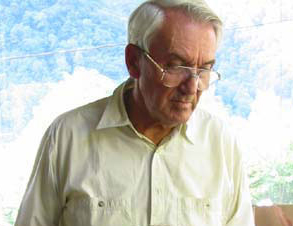
Fausto Longhi e Mario Laudicina

Fausto è stato il nostro presidente per ben venti anni, dal 1986 fino alla fine dell’anno 2005 quando, ahimè, passò le consegne al sottoscritto, a Roberto Gozzo e a Marco Feliciani.
Ricordo con tristezza quel giorno. Ci trovammo all’ufficio postale vicino a casa sua per depositare le nuove firme sul conto. Lui, ormai anziano e con qualche problema di salute, voleva lasciare il club in mani fidate e scelse noi tre (!) che in quel periodo eravamo fra i più attivi all’interno dell’associazione.
Personaggio di altri tempi, di stampo antico, sanguigno, leale, grande pescatore, grande lavoratore. Un difetto: grande accentratore. Al fly faceva quasi tutto lui, anche le pulizie !
Sopportava con paziena gli innumerevoli scherzi che noi, irreverenti, gli facevamo. Ha gestito la nostra associazione con entusiasmo e saggezza facendo il possibile per superare le difficoltà, sempre più numerose, a partire dallo sfratto dalla storica sede di via Monte di Pietà.
Insieme a lui non posso non ricordare il suo fedele simpaticissimo assistente, il “Marietto” ovvero Mario Laudicina, altra figura storica del club. Erano sempre insieme, ovunque. Il Marietto sopportava pazientemente i mugugni del “capo”, era la sua “ombra”, la sua valvola di sfogo. Si volevano bene come due fratelli.
Abbiamo condiviso numerose giornate di pesca in Valtellina, in Austria, in Slovenia, in Valsesia ed in tanti altri posti.
Memorabile fu una gita del club da Branko in Slovenia.
Fausto e Mario hanno arricchito la schiera di personaggi del vecchio Fly dai quali ho appreso tante cose ed ai quali devo molto.
Grazie Fausto, grazie Marietto.
“Chiodino”


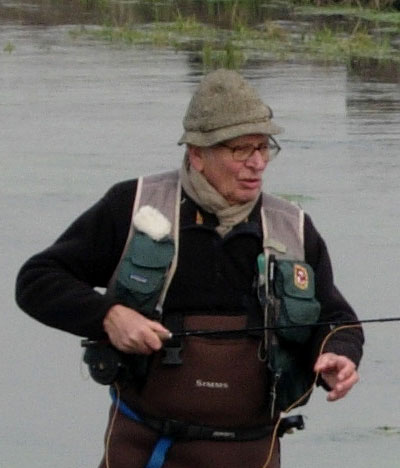
Norme di sicurezza: stivali e waders
La presa suggerita dalle guide americane per l’attraversamento delle forti correnti: le canne bloccate negli appositi passanti dei gilet e, cosa più importante, uso del bastone da guado. Questo é il modo più sicuro per affrontare un guado impegnativo.
Molto tempo prima di dedicarmi alla pesca, ho usato stivali e stivaloni di gomma per cacciare in terreni umidi, in particolare per la caccia in palude ad anitre e beccaccini. Avevo quindi familiarità con queste calzature, così utili per camminare nel fango e nell’acqua, ma anche pericolose nel caso di una caduta in acqua da un barchino. La stagione generalmente fredda, l’impaccio di fucile, cartucciera ecc., potevano provocare tragici incidenti, stante l’impossibilità di muovere in un tentativo di nuoto, le gambe appesantite dagli stivali pieni d’acqua. Ricordo alcuni amici salvatisi miracolosamente, ma anche due giovani tragicamente scomparsi in un lago laziale.
Quando ho cominciato a pescare a mosca, mi sono reso conto dell’indispensabilità degli stivali per la pesca in torrente e dei waders per la pesca nei grandi fiumi: attraversare un corso d’acqua, o entrarvi per una corretta presentazione della mosca, era una cosa necessaria, ma pericolosa. La familiarità con l’acqua (l’essere cioè buoni nuotatori, o addirittura esperti subacquei) poteva certo aiutare, se non altro a vincere il panico, ma occorreva un’esperienza specifica per superare le situazioni di crisi. Mi ha molto stupito vedere degli amici inesperti di nuoto avventurarsi con i waders in acque profonde o veloci, e magari piene di ostacoli o di rocce scivolose, armati solo di nozioni teoriche, quali l’opportunità di stringere i waders con una robusta cintura. Ho voluto perciò sperimentare il comportamento da tenersi nel caso di caduta in acqua, tra le risate ed i lazzi dei colleghi moscaioli, provando a simulare la caduta in acqua via via più profonda e veloce.
Queste le mie conclusioni.
Con i waders di neoprene è impossibile andare sott’acqua (come ben sanno i subacquei che usano una muta). E’ sufficiente non farsi prender dal panico, non agitare le gambe appesantite dagli scarponi, fare il morto, e con qualche movimento delle mani cercare di avvicinarsi alla riva, dove arenarsi o aggrapparsi ad un cespuglio. Aggrapparsi comunque con le mani alle ginocchia per tenere la testa fuor d’acqua. Con waders leggeri e non aderenti, di qualunque materiale siano costruiti, chi si agita finisce con la testa sott’acqua e la parte inferiore dei waders che galleggia piena d¹aria. L’unico mezzo per evitare questo rischio mortale, consiste (ammesso che si riesca a non cedere al panico) nel fare il morto per un attimo e subito afferrare con le mani le caviglie. In questo modo è come se si fosse aggrappati ad un salvagente, costituito dalle gambe dei waders pieni d¹aria. Occorre lasciarsi portare dalla corrente che, prima o poi, ci condurrà ad un ghiaione o ad una riva erbosa.
Ho collaudato i miei consigli facendo il bagno in tanti fiumi facili o cattivi, dalla Dora al Ponoi, dall’Adda alla Sava (tra l’altro senza mai prendere un raffreddore). A tutti gli amici consiglio di non temere di farsi prendere in giro dai compagni, ma di provare il comportamento in acqua in condizioni di assoluta sicurezza: assistenza di amici, acque lentissime e poco profonde (magari una piscina per bambini) e non fredde. A quelli che poi hanno minor familiarità con l’acqua,oltre all’ovvio consiglio di non arrischiare mai, suggerirei di usare i waders meno rischiosi, e comunque, nelle condizioni estreme, di non temere di usare un salvavita: gilet o bretelle gonfiabili, o addirittura, nel caso di spedizioni in acque non familiari, un buon giubbotto salvagente che ci tenga a galla e con la testa fuor d’acqua.
Qualora si usino waders non aderenti al corpo (siano essi di gomma o vinile o Gore-tex) essi devono essere muniti di un cordoncino scorrevole in una piega del bordo superiore (da stringere prima di pescare) così da evitare che la parte alta dei waders, stretti in vita, formi alcune pieghe da cui è molto facile imbarcare acqua: esperienza comunque non piacevole! L’ideale naturalmente è di poter fare a meno di stivali e stivaloni, e di poter pescare a gambe nude: vantaggio non piccolo di quel fascinoso sport che è la pesca in mare sui flats!
Carlo Orombelli
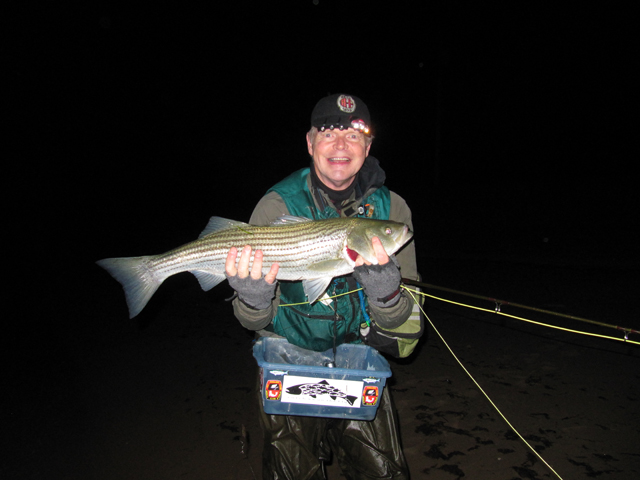
Got Stripers, Will Travel by Arturo Kenney



Here is a great recipe for some hot fun in the summertime. Use a large house in Aquinnah on Martha’s Vineyard, sprinkle-in a generous amount of Milanese Fly-Fishermen; mix-in a copious selection of E-Z body sand-eel, angel-hair neonate herring and Ray’s flies; then just add water, and salt to taste. Presto!
I am a passionate fly-fisherman who targets nocturnal stripers using my 6’ 8” height for wading advantages. My height was an advantage when I was the power-forward for Power Memorial where I played with Kareen Abdul-Jabbar on what was named the High School Team of the Century before moving on to Fairfield University. After graduation, I spent 4 years in France and 4 years in Italy playing professional basketball. For three of those glorious years, I was fortunate to play for Olimpia Milano, the Club where Bill Bradley, Mike D’Antoni and Danillo Gallinari all played.
Several years ago, while on a visit to Milano, a former teammate introduced me to Roby Pecorelli an officer of The Fly Angling Club of Milano. As a young boy, Roby was a fan of mine during my three 3 successful seasons at Olimpia Milano, and to reciprocate for his support, I volunteered to do a presentation on fly-fishing for nocturnal stripers at the Club’s weekly meeting. That year, I used handouts and my fluency in Italian to capture their imagination for my other passion. In preparation for a return visit the following year, I taught myself to use PowerPoint, and was able, with Roby’s assistance, to do a slide-show for them. My presentation must have made an impression because when I checked the website in early 2010, I read an interesting article. It was the story of a trip that some of their associates who attended my presentation, had made to Martha’s Vineyard in 2009 to fish for stripers. With an exchange of e-mails on my birthday, Roby informed me that the Club members wanted to sponsor a trip to the Vineyard to fish for stripers on Lobsterville Beach later that summer. I began lining-up convenient property rentals and developing a shopping-list for Italian specialties to bring from NYC.
2010 Martha’s Vineyard Trip

After much anticipation and executing my copious check-list, the day of departure arrived. I loaded my car to the hilt with the all the specialty products which you cannot easily find on the Vineyard. I left NYC at 1 AM so that the 4+ hour trek to Woods Hole would be time-efficient and was able to catch the first ferry to Vineyard Haven. When we docked, I drove straight to Coop’s Bait and Tackle to check-in with the legendary information-guru Cooper Gilkes. His car was parked outside with his fly-rod on top. Attached to the tippet was his creation, the black E-Z-body sand-eel. I told Coop, as he is referred to by the locals, that my friends from Milan were coming, but due to their late arrival would miss his annual tournament which was already in full swing. Coop offered to show the Club members how to tie and construct his sand-eel prototype. When I arrived at the house, I stocked the pantries and fridge




The six ragazzi finally arrived just before midnight, and by then I was chomping at the bit to fish, but they had the proper perspective and said “Prima, facciamo la spaghettata” (First, we must make spaghetti)! The spaghetti was made all’ aglio, oglio, e pepperoncino (garlic, extra-virgin olive oil and chili peppers). Luigi Meli told me that the most important thing was to warm the garlic in the oil and above all, not to burn-it, and then to remove it once it turns opaque. With appetites sated, we then headed-out to locate stripers.



The fishing was mediocre that first night and at about 7 AM we were back at the house and found Roby already making bacon and egg for the troops. With hunger pangs quelled and with bleary-eyes, we all retired for some much-needed rest. Less than two hours later, I was awakened with a chorus of laughter coming from downstairs – the best alarm you could want! It dawned on me that it was just about 4 PM in Milano! I joined the ragazzi and soon after we headed to Coop’s where he gave us a lesson on the proper way to tie his black E-Z body sand-eel (Black E-Z body with black-forest chenille inside). We then drove to Edgartown so I could give the guys a tour of the town. The insomniac marathon continued after our drive home as we began mass-producing clones of Coop’s sand-eel, while other team members began preparing our pre-outing pasta.



Bass Blitz
Fishing was good for the duration of the week, but a bit slower than what the associates found in 2009, until Thursday which was windy and rainy day. That evening, we set-out at high tide at 8 PM, and as the tide dropped both the wind and rain picked-up. At about 10 PM, the sand-eels appeared and schools and schools of stripers came blitzing-in. I usually fish aggressively, and at one stage of the dropping tide, I was able to traverse the trough and get on the Lobsterville flats. Once on the flats I was completely surrounded by stripers which were slurping in sand-eels as if they were vermicelli. I called to Roby and to Club President Marco Feliciani to risk a little dampness to wet-wade over to join me. Roby and Marco who were standing on the shoreline yelled-back that they had stripers crashing sand-eels up to the shore and that the sand-eels were jumping on to the sand to get away from the ravenous stripers. The mild current was moving from right to left as the tide receded, and I positioned myself to be able to cast down-current, and was having good success doing a two-handed stripping technique and retrieving up-current. There were so many stripers and they were so voracious and aggressive that I could literally touch some with my hand. I was like a kid, or a sweet-toothed adult, in a candy shop! I later modified my technique and began casting up-current and had even better success bringing my flies into the zones that the stripers were facing! I was using four different flies (a’ la Kenny Abrams-style), and I caught fish on each of them. In my debriefing, I told the guys that it seemed that sometimes it may not matter which fly you are using, as long as you have the proper presentation, and “serve it right to the bass.” Once the mayhem subsided, I joined Roby and Marco on the shore for the walk back to the house, and we could not help but notice all the suicidal sand-eels which preferred to beach themselves rather than face the hungry stripers. The shore-line table was set with a sand-eel breakfast for terns and seagulls.
Gentlemen Prefer Blondes & The Fly-Doctor Will See You Now!
On Friday evening, the wind continued and I had given Club President Marco one of my small black-and-red blondes. It’s a simple and very light-weight sand-eel-imitator fly with a black & red deer-hair wing and pearl body braid. It is an easy fly to cast in the wind, and I was casting a “daisy-chain” of four blonds (don’t tell my wife as she may get the wrong idea!). Since the wind coming from right-to-left, I was casting back-hand style, similar to tennis back-hands. Marco who is the Club’s long-cast champion was casting a full line (90-100 feet of distance), and false-casting and casting in the traditional fore-hand style. At first light, Marco called me over for assistance, and as I approached him, I noticed that he had imbedded my blond into his chin. I tried twice to remove the fly but since I don’t crimp my flies, it would not reverse-out from his chin. We agreed that pushing the tip through and clipping the end was the best procedure. On the first try the point came through, and on the second push the barb came out and Marco’s titanium clippers allowed me to snip-off the end and reverse the fly out. When we arrived at the house, we applied a generous amount of Neosporin and topped that off with a generous application of Nu-skin. With that procedure, Marco was as good as new. He as promised not to report me to the Massachusetts authorities for practicing medicine without a license, but I think I am covered under my Massachusetts Fishing license…right?!
Dog-Fish Bar
With the departure scheduled for Sunday morning and with packing and tidying-up to do at the homestead, fishing on Saturday evening ended relatively early. Paolo Balsamini is a great fisherman and a hard-core fishing addict, so he persisted and headed to Dog-Fish Bar to bid “arrividerci” to the inhabitants. He said it was very quiet until 1:30 AM when the tide-change turned the bass on. From that point until he had to leave, he got hook-ups on almost every cast. The bass were in the 26-29 inch class! Paolo slept all the way back to the airport and then back to Malpensa Airport-Milano, no doubt counting bass instead of sheep.
2011 Martha’s Vineyard Trip
Seal The Deal
With the successful trip of 2010 still in their minds during the Milanese winter, and with the onset of spring 2011, we began making plans for a return to the Vineyard. We found the perfect house able to accommodate 10 members of our Club on Mariner’s View Lane, about ½ mile from Gay Head Lighthouse. When our vacation week finally came, the ragazzi arrived on Sunday night in a driving rainstorm. We undertook the inaugural spaghettata with gusto and prepared for fishing at first light. They integrated the flies that I had tied and organized in a fly-box for each of them, with those they had brought from Milano.


At first light we made our way down the private path to the long, long wooden staircase which led to the boulder-strewn beach below. We were about a mile from Lobsterville and about ½ mile from Gay Head. We set-out in the direction of Lobsterville, but I first stopped to fish the tail-end of Dog Fish Bar. My go-to color at night is black (I know black is not a color but the absence of color so I am invoking poetic license). I am a big fan of fishing white at first light. The four-fly combo that I chose was: a white floating sand-eel, two small white eel punts, and a small white bunny dropper. When a half-hour passed without any activity, I decided to change flies and after stripping-in, I noticed my dropper had been bitten-off. I am very cognizant of staying-in-touch with my flies so I was baffled as to what happened to my dropper! I tied-on another white bunny dropper and resumed fishing when out of the corner of my eye, I spotted something pop-up and then disappear. I continued fishing and shortly thereafter it popped-up in my line-of-sight, about 50 yards out. The culprit was a seal and it was bobbing its head up and down in “bobble-head” style. I told my Team that I had gotten the “seal of approval” to fish Dog Fish Bar! The rest of the trip was a slow pick with the most successful flies being Coop’s E-Z Body sand-eel, Ray’s fly, and a floating E-Z body neonate herring fly.
Grande Amico Coop!

The Club’s flight from Milano to Boston for the most part had been uneventful for the members, but for the baggage- not so much! When Paolo Lorini arrived at the baggage carousel in Boston, his bags did not make it and he got the run-around. He was promised that the bags would be delivered to the house on Mariner’s View Lane. I spent the next afternoon on the phone with the airline service rep in Boston. With all the calls required to my new-best-friend, Kevin, I must have been eligible for frequent-flyer miles. My daily calls to Kevin became a standing-joke with the crew, and they would require that I send their regards on each call. When Paolo’s bags did not arrive the next day, though we could have outfitted him with almost everything, it was determined that it would not be prudent to have him wade-fishing with his size 9 feet in my spare size 14 waders! At 6:25 PM we called Cooper Gilkes at his shop, and thought his closing-time was 6:30 and we were 45 minutes away, he said he would be happy to stay-open and wait for our arrival. Instead of selling Paolo waders, he insisted on lending him a perfectly fitted set for the duration of our stay, and saved the vacation for Paolo!




What Works For Me
When shore-fishing for striped bass, our team uses floating fly lines exclusively, and I use a 10-weight G. Loomis Cross Currents fly rod, up-lined with a 12-weight floating line. I find that rod stiff enough to support the heavier-weight line, which in turn allows me to cast multiple flies. I use heavy fluorocarbon material for my leader (e.g., segments of 60#, 52#, and 39# tippet; or segments of 50#, 40# and 30# tippet). I connect each segment with perfection loops and secure my flies with loop-knots. Using the heavier material allows me to break-down the loop-knots rather than clipping off segments when I change flies which otherwise creates more pollution for the environment. Employing multiple flies can result in multiple hook-ups (my largest was a 34” and 28” tandem).



When you do get a double-header, the key is to be sure that the larger of the two fish is tired and no longer “green” before you grab the larger one. If you happen to grab your leader and you then realize that the bass is still too feisty, you may be successful tiring it by leading it around in a circle, like a dog on a leash. I am very aggressive and try to release fish as quickly as possible before they get stressed. On one occasion, I hooked a 36-inch bass and proceeded to grab onto my leader. As I grabbed the leader (I always use fingerless gloves when I fish) I got the sensation that the bass was still very green. When I felt it was still too-hot-to-handle, I began to pivot around in a circle (really, it was walking me!), and I must have done at least 12 pirouettes before being able to unhook and release it. I told my friends that in hind-sight, the strategy that the bass must have been using was either to get me dizzy or to screw me into the sandbar and have me drown with the rising tide!
One thing to remember is to “close the 5-hole” (as hockey players say) or you might hook a tricky bass which will try to scoot through your legs. That is an error in baseball and can be a more serious error when fly-fishing! One night while fishing-solo in hip-deep water at the end of Penfield Reef, I had a bass scoot-through my wickets and proceed to wrap my leader around my left leg. Luckily none of the other flies on my leader hooked onto my boots or waders, or I may have wound up sleeping-with-the-fishes! The most important part of my equipment and the best investment I have ever made is my Stearns CO2-Inflatible PFD (Personal Flotation Device). It has a lanyard trigger or can be activated by blowing through the inflation tube. I have never had to deploy the device, but came close to inflating it on one October evening when I was fishing-solo on Penfield Reef off Fairfield, Connecticut. I had inadvertently stepped in a hole while subduing my largest bass ever, a 43-incher, and almost got swept-off the reef by the current!
Tutti (Scherzi) a Tavola (Practical Jokes)

Meals are always an event with the Fly Angling Club of Milano. The morning meal runs the gamut from the Continental-style breakfast to the American-style breakfast. The pre-fishing meal usually centers around different types of pasta: spaghetti all’aglio, oglio e pepperoncino, spaghetti all’ammatriciana, spaghetti alla carbonara, and penne allo striper with either white or red sauce. The table centerpiece is something clever and on one occasion, it has featured the head of a striper coming out of the table drinking a bottle of wine or a bottle of tabasco sauce.
Meals are also a time to catch-up on the specifics of what’s working and what’s not with the stripers which can be finicky on occasion. It is also a time to tell funny stories. Paolo Balsamini told a story of a beautiful Milanese woman on a tram when a young man brushed-up against her. When the woman took exception and said, “Signore, lei e’ un porco!” (Sir, you are a pig!”), the young man responded not by saying “Io?” (“Who, me?”) but by saying “Oink?” The response and Paolo’s intonation and gestures had everyone in stitches. Eye-contact with Paolo only brought another round of laughter. Later on Lobsterville Beach, when Paolo approached me and asked “Arturo, is that you?”, I responded with “Oink!”



That season, the most productive night was the last night. Enormous schools of neonate herring moved into the trough, and keeper-size bass kept them pinned down there. As I stood hip-deep in the trough, I could feel the small herring bumping into my waders as they tried to escape the hungry bass pressuring them on the outer-limits of the schools. We caught bass-after-bass, most in the 30 inch-class.
2012 Martha’s Vineyard Trip – Third Time’s the Charm

Early this year, we began to plan for our tri-peat and were able to find a house that seemed almost perfect both in size and in locale. A short walk on the private path to the beach brought us to the end of Lobsterville Beach and the start of Dog-Fish Bar giving us easy access to either option!
As I was about to finalize the lease, the owner offered to extend the lease for an additional 4-days at the start which allowed me to spend time there with my family, and also provide scouting reports for the club members in Milano before their scheduled departure. My wife and daughter were patient on the drive up to the Vineyard and tolerant of all the specialty foods filling every available nook-and-cranny of the car.
The themes of the reports that I e-mailed back to my friends in Milano were quantity and quality: that I was catching a good number of fish each evening and that they were mostly keeper-size bass. I was having success with Coop’s E-Z body sand-eel fly. I also had success with the angel-hair neonate herring flies, specifically in colors of holographic silver over pearl and cobalt-blue over pearl. I had meticulously prepared several of the neonate herring flies in each color for each of my soon-to-arrive amici Milanesi.
When the team arrived late Sunday evening, the shore fishing continued to be outstanding, not only for the number of fish, but in particular for the quality of fish caught. About 90 % of the stripers caught were keeper-size! In addition, we caught some of the largest hickory shad I have ever seen, and the 5-to-6 pound cousins of tarpon made it seem that they were participating in the Olympic Trials for the hurdle and high jump events!


One morning, Paolo Balsamini returned well-after our normal sunrise breakfast, bleary-eyed and physically spent, with a 36-inch striper in tow. Paolo had caught the bass at the end of Dog-Fish Bar, and rather than try to carry the bass home, chose to walk in the water and troll the bass behind him! That would be a conundrum for any fisherman…to carry, or to wade & troll! Fortunately, since I am a Life-time CCA member and 100% Catch-and-Release fisherman, that is not a choice that I would have to make. Paolo also told us that he caught many large bass like that all night, in such skinny water that he could see their wakes as they approached his flies! After Paolo’s summary report, when Alberto Bringhenti asked me at what time I would be leaving to fish that night, I told him that I would be leaving “… about 30 seconds after Paolo!”
Angry Bird!
That afternoon we visited Coop’s Bait and Tackle Shop outside Edgartown to give him a report on our activity, and to ask if there were other areas where we should be fishing. Coop said that if we wanted to add some blue fish into the mix, that we might want to consider fishing the flats at the end of Fuller Street in Edgartown. After loading-up on many of the materials that Coop’s Shop has and which are difficult to find in Italy, we went to scout-out the Fuller Street Beach flats. When we arrived on that beach, we could see the Edgartown Lighthouse in the distance. We scanned the flats looking for signs of activity, fish breaking or birds diving into the water, and then saw a very large seagull dive into the water and pick-up a large spider-crab off the shallow bottom. It then took flight with the crab dangling from its beak, circled around us and dropped the crab on the sand, some twenty yards from where we were standing. As the gull landed to begin its luncheon feast, Club President Marco Feliciani and Pino Savino ran down the beach, which caused the gull to abandon its meal. They then released the crab back into the water. The squawking of the gull showed that it was quite livid and I told the guys that if they remembered Alfred Hitchcock’s film The Birds, they had better beware of the revenge of Angry Birds!
That evening, I made arrangements to fish with Paolo on Dog-Fish Bar and told him I would meet him there. Marco and I set out for Dog-Fish Bar about an hour after Paolo’s departure. We fished from the start of the bar all the way down to the end with no sign of Paolo. I caught my largest bass, a 36-inch striper, on a Ray’s fly at the south-end of the Bar, the end closer to Gay Head. At first light Marco and I began to fish our way back to the house. On one of our stops, as we walked to deeper water, a fish broke about 25 yards out beyond where we were. I told Marco to be aggressive and to cast right at the bass, and on his first cast, he was tight to the 34-inch bass. Our capo di cuccina, Eros, who performs kitchen magic, said that he could use a striper, so Marco waded the 50 yards back to the shoreline and placed the bass safely on the sand…at least he thought! Marco returned to fish near me, but after his first cast, he turned-back to re-orient himself to his new position and saw a large seagull land next to the bass to stake its claim on the abandoned bass. Marco ran-back, over-ruled the gull and reclaimed the bass as his, setting the Italian record for the 50 meter dash in waist-deep water! I took that episode as my cue that it was time to head back to the house. I warned Marco that the seagull was the same one from the day before on the Fuller Street beach, and this was probably only the first chapter of its revenge. I reminded Marco that Sicilians say that “Revenge is a dish best served cold!” which in seagull translates “a fish best served cold!” Chef Eros worked his magic, blending penne, striped bass and a white dill sauce that evening. We all agreed that the dish was the best meal of the vacation, and likely the best pasta dish ever served on Martha’s Vineyard!



Later when Marco and I went to do an errand in town, I pointed-out to Marco that a seagull had air-mailed me a message on the hood of my car and that it was likely the same Fuller Street Beach seagull. When we left on the ferry-ride back to Woods Hole we had a seagull circle the ferry and then land on the mast. I pointed it out to Marco that it looked like the same seagull and that he may want to be on guard even when he got back to Milano.
Catch & Release, Release!
That night, the wind picked-up and so Paolo, Massimo Conti and I decided to fish on the other-side of Gay Head lighthouse on the south shoreline, where the high dunes would shelter us somewhat from the wind. Massimo was the first to score with a large shad and a nice bass, and Paolo then landed a nice bass. Though we were somewhat protected by the wind, we still had to deal with some very high waves, and a rogue wave every so often. As I was changing a fly, one rogue wave snuck-in and almost knocked me on my derrière! A couple of casts after loop-knotting a chartreuse-over-pearl angel-hair neonate herring fly as my dropper, I was able to hook a 31-inch bass. I quickly subdued the bass and then released it into the turbulent surf. Moments later, when we were about to leave, I saw Paolo on the shoreline behind me holding a keeper-size bass. As I waked-in to join him and Massimo I yelled that his bass seemed even bigger that the one I had just released. Paolo explained that he found the bass on the shoreline. I exclaimed that in spite of my compliment that his was larger than mine, it had to be the bass which I had just caught and released and which was evidently unable to properly navigate the rough surf-zone to the calmer water beyond. I scooped-up the bass and was able to revive the bass until it recovered; only this time, I released it beyond the white-water zone!
Lost In Translation!
During our fly-tying session one afternoon, we heard a knock at the door. When I opened the door, it was two young ladies who were missionaries from the Church of The Latter Day Saints, and were looking to recruit new converts for their upcoming conference in Providence, R.I. To save time, I told them, “Thank you, but we are Italians from Milano and would not be able to come!” That brought howls from Roby and the others who came running out and told the missionaries that I was American and they should insist that I attend the conference. In Houdini-like fashion, I was able to extract myself from the conversation and get back to making more of Coop’s sand-eels, but that was not the last I heard from them of my trying to pass for Italian!
A few of our members were friends of a fly-shop owner from Pennsylvania named Bill, who vacations in the Vineyard where he also has a boat. Marco and two other members were scheduled to go out on Bill’s boat on the following day, so were also making some Clousers and some half-and-halves for the boat-fishing trip. The phone rang, Eros answered it and then called over to me, “Arturo, it’s your wife.” When I answered, it was actually Bill on the line hoping to finalize arrangements for the next morning’s fishing trip. I told Eros that my wife’s name was not Bill, and that her voice was several octaves higher! Every time Bill called after that, the guys would say, Arturo, it’s your wife, Bill.” My retort was that it was a common mistake for Eros since his name in English translates to Cupid!

Arrivederci!
The Vineyard is a cornucopia of natural beauty, enhanced by the distinctive Victorian character of Oak Bluff’s architecture or the New England character of Edgartown’s architecture. Vineyard sunrises and sunsets are a wonder to see and in themselves are worth the price of admission! My amici Milanesi are hooked-on the Vineyard, and our e-mails and pictures that we share during the winter sustain those vacation memories. Next season the Fly Angling Club of Milano will be looking to come for two weeks – we have so much fun, it’s almost impossible to cram it all into one week, and so we will be reserving two weeks for next year…
Stripers, beware!!!
Arthur Kenney
Giugno 2012

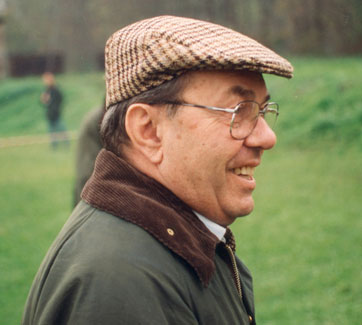
Pierino Strozzi

Dialogo immaginario
“Stupore, incredulità, rabbia, tristezza. Questo ho provato quando ho appreso la notizia della tua morte, caro Piero. Mi sembra davvero impossibile che sia potuto accadere”
“E perché, cù e mena, te credevet che mi fussi immurtal per caso??”
“No, ma non ero preparato. Mi mancheranno le tue frasi dialettali, frasi spesso brevi, secche e decise che sapevano fotografare le situazioni e con le quali risolvevi qualsiasi problema. Eri un vero leader, avevi il carisma del capo!. In questi giorni di vacanza (…eh sì, dopo la cerimonia sono andato in ferie … cosa vuoi, la vita deve continuare ….the show must go on….)……”
“Te fe ben, me la ciapi no… ghe mancheria….e parla no in ingles che te se minga bun ..”
“…..spesso ripenso a tutti i giorni trascorsi insieme. Ne abbiamo fatte di uscite di pesca! Dal 1991 in poi hai praticamente condizionato la mia vita di pescatore (e non solo): Scozia per dieci anni consecutivi, Tierra del Fuego, British Columbia, Austria e tanti altri posti in Italia. Ogni volta era una festa, indipendentemente dall’esito della pesca. Sapevi tenere unito il gruppo.
Quando ti ho conosciuto, nel 1977, eri per me inarrivabile. Ti davo rispettosamente del Lei, ero uno sbarbato alle prime armi….”
“Perché adess te se diventà grand ?”
“…poi piano piano sono riuscito ad inserirmi, non senza difficoltà, nel club e la conoscenza superficiale si è trasformata nel tempo in una profonda amicizia. Però nei tuoi confronti ho sempre avuto un po’ di timore reverenziale, forse dovuto alla differenza di età….”
“Uei pirlun, te vulet dì che sun un vegiet? Va che sun anca mò bun de dat una pesada nella burella del ginocc o te preferiset un sgiafun??”
“Caro Piero, mi manchi! Ho perso un punto di riferimento importante, un amico, un padre…un maestro di vita….”
“Ueila adess piantala, te me fè una dichiarasun d’amur ? Lassa perd…..”
“….eh sì, Pierino, ti ho voluto proprio bene come un figlio, anche quando mi fregavi le fette di bacon …..”
“anca mò cun ste storia!! Va che l’era el terun del Fraschetti a ciulà la roba da mangià, minga mi!!….”
“…anche quando ti arrabbiavi perché non capivo le tue lezioni di lancio con la canna a due mani….”
“per forza!! Te set un pulaster, te sbagliet i tempi…il timing…te perteghet nò i nuss!…te capiset un c….Sun propri curius de vedè cume te se la cavet el prossim uttuber in Scozia! Va che mi pudi no vegnì ……te saret da per tì…….”
“eh si purtroppo lo so bene che non ci sarai……hai lasciato un grosso vuoto….”
“Uei cù e mena, adess basta, muchela che mi gu de fa. Devi andà a cercà i me fradei e poi anche el Paolo e l’Angel e l’Adele….. Magari chi ghè anche un bel negosi de pesca…chissà se ghè la pussibilità de fa una bella pescadina….se sa mai…..”
“Certo Piero, ti lascio, mi auguro che sia come dici tu….. Tight lines…..”
“Chiodino”

